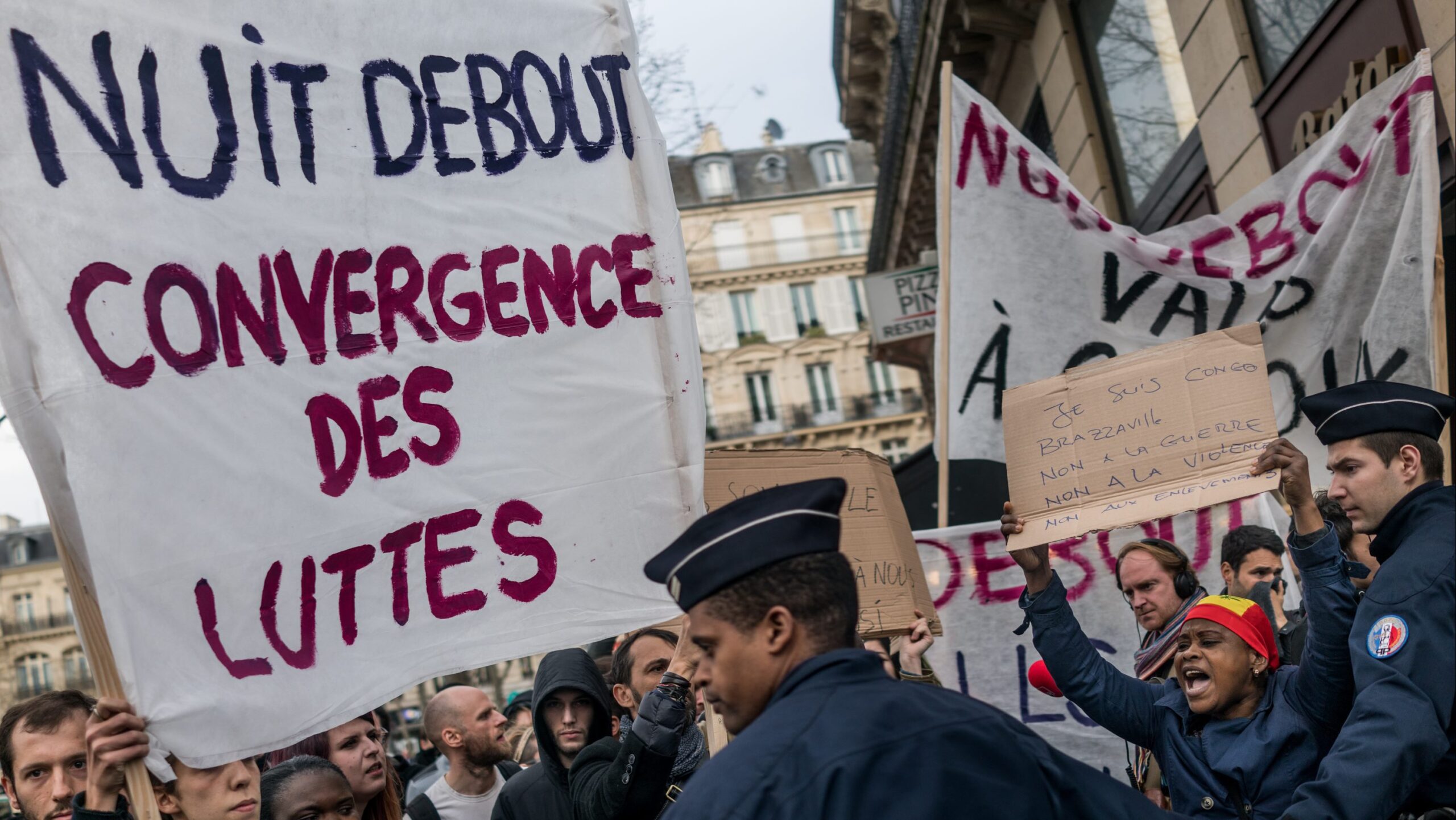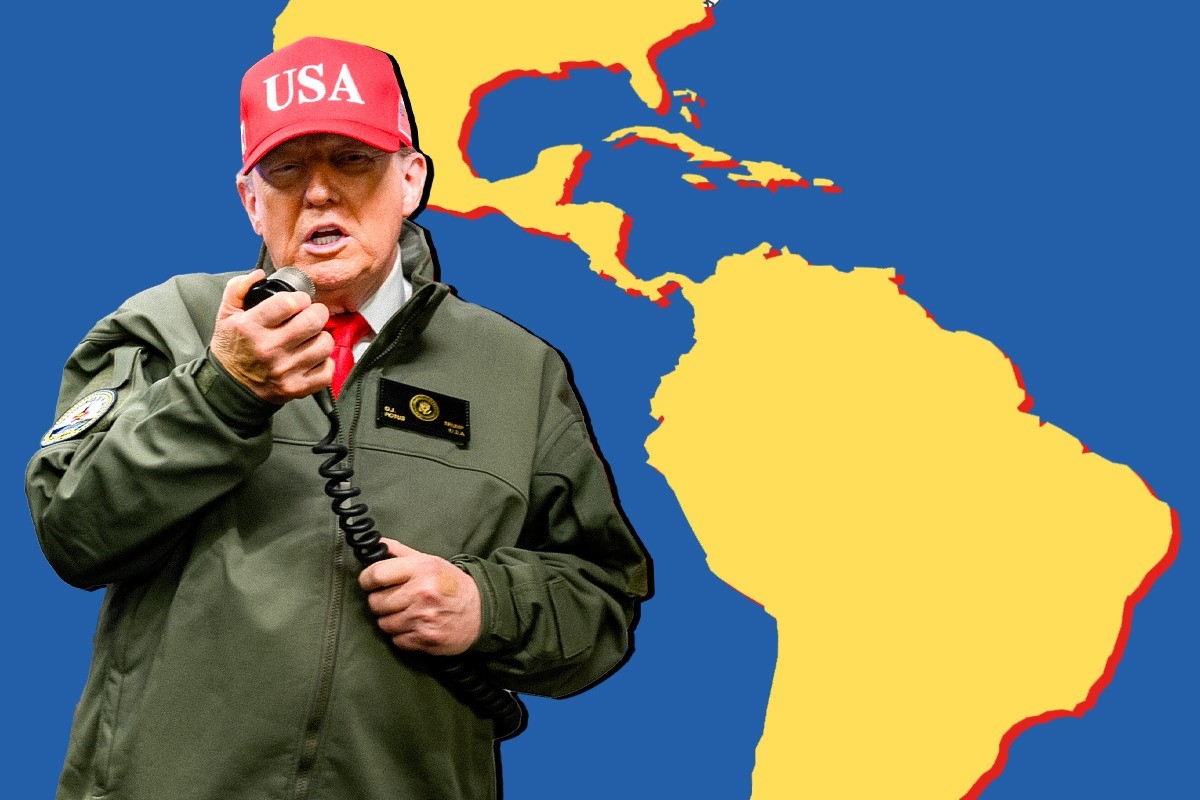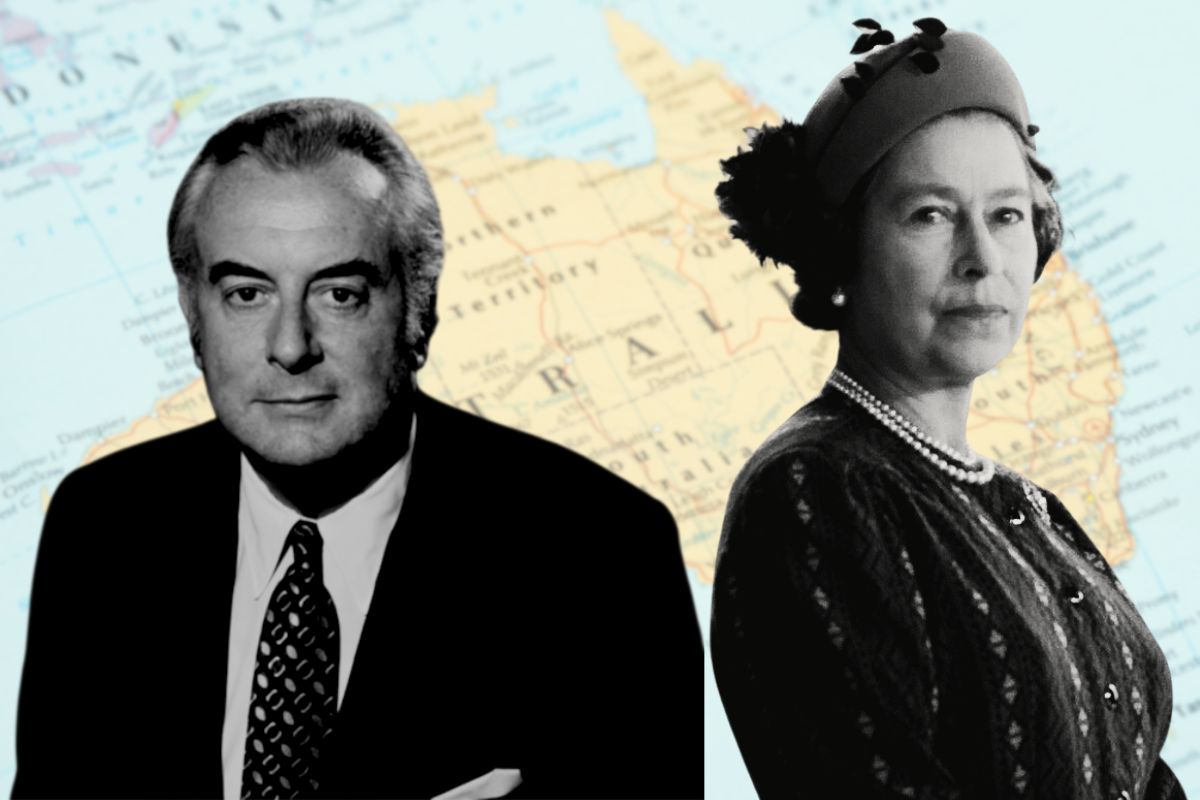A massive protest movement in France has been taking place since February. Sparked by the announcement of a reactionary new “reform” of the labour laws, this movement is mobilising hundreds of youth, and has given birth to a new method of organisation called the Nuit debout (Night Stands Up). A new generation is being drawn into the struggle.
A massive protest movement in France has been taking place since February. Sparked by the announcement of a reactionary new “reform” of the labour laws, this movement is mobilising masses of youth.
It has given birth to a new method of organization – imported from the Spanish Indignados movement – called the Nuit debout (Night Stands Up). This movement is supported by a huge majority of the population who are tired of years of counter-reforms and cuts carried out by the so-called “left” government of the Socialist Party (SP).
The Hollande government
During the 2012 presidential election, the Socialist Party candidate Hollande made a lot of pledges (the right for non-French citizens to vote, defence of the public services, etc.) and even said that his “enemy” was “the world of finance”. To most voters this seemed preferable to a continuation of the Sarkozy years, even if they were not whole-heartedly enthusiastic about Hollande.
But disillusionment quickly set in. From the first months of his presidency, Hollande put forward a great deal of counter-reforms, following the example of the PASOK in Greece or the PSOE in Spain. Many laws were passed suppressing workers’ rights, to the benefit of the French capitalists who were eager to make the working class pay for the crisis. The Macron law, for example, authorized stores to open on Sunday forcing their employees to work without any special pay. It also softened the punishment for bosses hindering shop stewards activities.
Officially these measures were to solve the issue of unemployment, which was very high – especially among the youth (rising to 25.7% for those below the age of twenty-five). These measures failed miserably to solve this growing problem… which is no surprise. These laws were created to make sackings easier, and it is not by firing your employees that you fight against unemployment.
Under these conditions anger began to grow against the government, whose popularity collapsed. With an eighty-five percent disapproval rating, Hollande is the most unpopular President since approval-rating opinion polls have been carried out. His prime minister, Manuel Valls, is just a little bit more “popular”, with“only” seventy-four percent dissapproval. This anger expressed itself in a series of small explosions of class struggle, such as the Air France struggle during late Autumn 2015.
The situation is clearly favourable for the rise of an opposition to the left of the Socialist Party, as with Syriza in Greece or PODEMOS in Spain. The candidate for this role appeared to be the Left Front. But it has failed more than once to embody this popular anger since 2012.
Failure of the Left Front
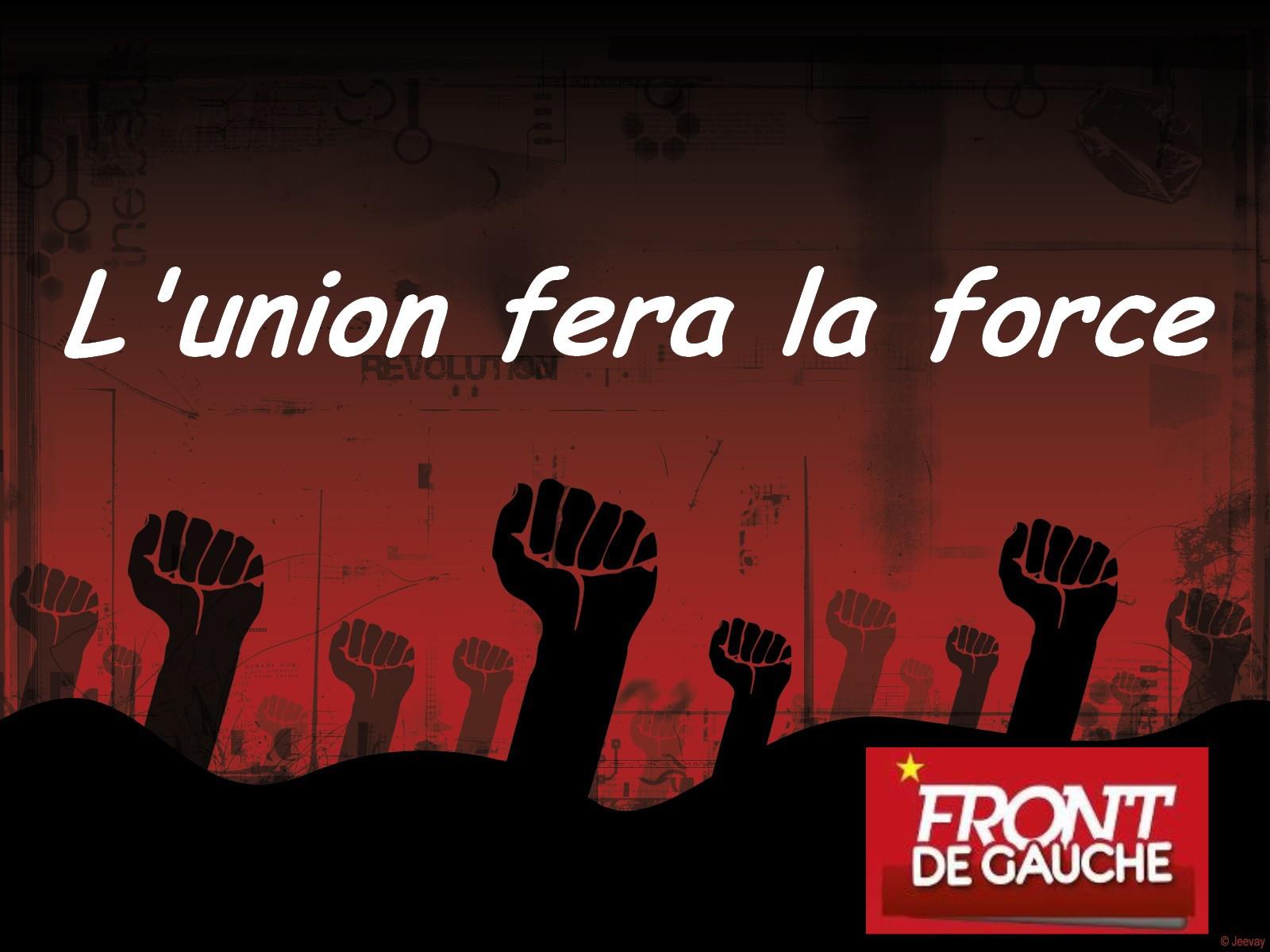 The Left Front was formed in 2009 by an alliance between the Communist Party (CP) and a small split from the Socialist Party called the Left Party. It had enjoyed great popularity when Mélenchon, head of the Left Party and candidate of the Left Front in 2012 presidential election, ran a campaign directed against the SP and against austerity politics, calling for people to “take the power”. Mélenchon gained eleven percent of the vote, a success which put on the agenda a continuation of this line and the transformation of the Left Front into a real left opposition to the government.
The Left Front was formed in 2009 by an alliance between the Communist Party (CP) and a small split from the Socialist Party called the Left Party. It had enjoyed great popularity when Mélenchon, head of the Left Party and candidate of the Left Front in 2012 presidential election, ran a campaign directed against the SP and against austerity politics, calling for people to “take the power”. Mélenchon gained eleven percent of the vote, a success which put on the agenda a continuation of this line and the transformation of the Left Front into a real left opposition to the government.
For the leadership of the CP, this was unacceptable because it meant a break with the Socialist Party, even in the local elections. This would be unnacceptable for the CP bureaucrats who regard alliances with the SP as a matter of life or death. Since the party began its decline in the 80s, its leaders have been clinging to the SP. The electoral alliances with the SP guarantees the election of their local councillers and through that, subsidies to fund the party. The CP is heavily dependent on these financial sources, which amounts to fifty-seven percent of its income.
This led to a de facto split of the Left Front in the 2014 municipal elections. The CP formed alliances with the SP in some of the biggest cities, while the Left Party allied with the Greens, who were still members of the government carrying out reactionary laws. The same situation of confusion and unprincipled alliances has been repeated in almost every election since 2012.
Today, the leadership of the CP is deeply divided on the question of the 2017 Presidential election – its majority wants to join with the so-called left-wing of the SP in the Primary election to designate a candidate for the left, while a minority wants to pursue the Left Front with Mélenchon (albeit on the same basic economic program as that of the majority). Meanwhile, Mélenchon has announced his candidacy “above the parties”, and is attempting to create a movement in support of his candidacy.
During the local elections last year the effect of these vacillations were clearly expressed. With the left unable to pose as an alternative, a great part of the popular anger expressed itself through votes for the extreme right-wing National Front, but also (and in fact mostly) through abstention. Abstention rose to fifty percent in the regional elections, and thirty-nine percent in the municipal elections. This is the biggest abstention level ever seen in this kind of election in France since 1945.
All this expresses a mass feeling of rejection towards the existing political system. The government has tried to divert this growing anger through calls for “unity” and racist propaganda. The government has repeatedly tried to use racism to divide the working class. Prime minister Manuel Valls even called on the French to boycott brands producing “Islamic” clothing, calling them a “threat to the Republic”.
This racist propaganda was greatly assisted by the terrorist attacks in Paris in January and November 2015, creating a temporary mood of national unity, gathering the “nation” around its leaders. This also gave the state an excuse to enact a state of emergency, giving the government the right to suppress any demonstration and giving the police extended rights, such as home searches without a warrant.
The “Labour Law”
The government tried to take advantage of the shock created by the terrorist attacks and the promulgation of the state of emergency to enact a raft of reactionary measures. One such measure is the draft law on Labour, also called the “El-Khomri law” from the minister of labour, Myriam El Khomri.
This law is a frontal all-out attack on workers’ rights. It make sackings (even mass sackings) easier – giving companies the right to fire masses of workers without having to suffer economic penalties. It hugely reduces the power of the unions, authorizing bosses to organize referendums in their companies to approve deals that had been rejected by the unions, and gives them the right to conclude deals on almost everything at company level: wages, work length, etc. The law also reduces unemployment benefits, even if the unemployed had been illegally fired by his boss. This law was an unexpected gift for the French ruling class – at first even the bosses’ organisation didn’t know how to react. It is one of the biggest attacks on labour rights and amounts to a declaration of love to the bourgeoisie by the leadership of the SP.
At the beginning the reaction from the trade unions was very weak, calling for a demonstration a month later and not even daring to demand the withdrawal of the draft law. But for a great part of the population, this was “one law too many”. Mobilisations began with youth organisations, notably the student union UNEF, setting a date for demonstrations on a national level for March 9th, much sooner than the trade unions. They were joined by a Youtube video-makers’ collective who produced a campaign called “On vaut mieux que ça” (“we’re worth more than this”) speaking about general conditions of work and asking people to send an example of the worst thing they have endured at work.
In the unions, and notably in the CGT (the biggest and oldest union in France – which was closely linked with the CP in the past), the rank and file began to push for a more radical response, bypassing the leadership. More and more local unions began to call for demonstrations on March 9th and helped the youth activists to organise it. In Lyon, for instance, some railway CGT unionists helped students with the administrative process in order to have the demonstration authourized by the police. A move towards a national day of strikes and demonstrations began in ranks of the unions and succeeded in forcing the leadership of the CGT to reluctantly come out for the mobilisation (but without calling to strike).
A massive mobilisation
March 9th was a big success. Half a million demonstrated in the streets of most of the big cities. The movement gained huge popularity within the general population: fifty-three percent of French people supported the mobilisation. But what is really impressive is the figures among the youth (seventy-two percent support of under-35’s) and workers (seventy percent of the factory workers).
The mobilisation also grew in universities and high schools, resulting in occupations of schools by students showing a very militant spirit. It is in fact the biggest mobilisation since the fight against the CPE (the “Contrat Première Embauche”, a counter-reform that was withdrawn after a big mobilization and the beginning of a general strike) in 2006, and even maybe since the great strike movement of 1995.
Following March 9th, the union leaderships turned their forces to the preparation of the March 31st general strike, while youth organisations called for earlier days of mobilisation – one every week until the 31st. The union leaderships called for their members to support the youth mobilisation (in order to allow the rank-and-file to let off some steam), but without any national coordination of the struggle – only public servants were given a strike permit by the unions. The leadership of the CGT clinged to its strategy of so-called “days of action”: organising a national strike every month to put (moral) pressure on the government.
This was the same strategy practiced during the 2010 movement against pension reform. Back then, the idea was to organize separate days of general strike (called “inter-professional days of action”, to exorcise the ghost of May ‘68) each month, growing in power until the government would retreat and drop its proposal. There were big mobilisations, even at one time more than three million marching in the streets against the draft reform. But the government didn’t retreat.
A push for a true general strike lasting until victory began to form in the rank and file – some sectors even began to put it into practice – but the leadership didn’t follow and the movement ended in defeat. The main problem with the strategy of the trade union leadership was, that it thought it would be possible to force the ruling class to retreat without mass mobilisation of the working class in a general strike, bringing the economy to a halt.
The truth is the leadership of the CGT is paralysed by the fear of setting up such a general strike and failing, exposing its weakness, or worse, succeeding in organising such a strike but losing control of the movement. Because this happened in 1968, placing French capitalism on the edge of a cliff. This episode still haunts the French bourgeoisie. But it is also a nightmare for the trade union bureaucrats and reformist leaders, who above everything else dream of peace and stability, not to a difficult and unpredictable fight.
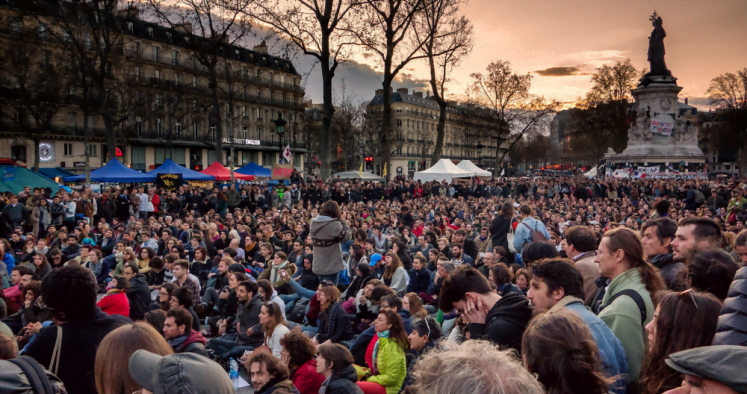
The Nuit debout
In spite of the hesitations of the leaders, this time the mobilisations continued to grow and March 31st was a big success, bringing more than one million people into the streets. Nevertheless, it was not followed up, apart from calling for another day of action on April 28th. Nature, however, abhors a vacuum. Deprived of a national organisation and leadership, some in the movement tried to bypass it by setting up an alternative way of organizing the struggle and determining its orientation.
Nuit Debout (which means “Night stand up” or “Night Awake”) began in Paris, called by intellectuals and militants from small groups and associations (such as the left-wing paper Fakir) and helped by some high-profile social commentators (such as the left-wing economist scholar Frederic Lordon). It was a call for an occupation of a square after the March 31st demonstration, on the model of the Indignados in Spain.
Nuit Debout assumed a mass character in Paris with the occupation of the Place de la République on the eve of April 1st, gathering several thousand people every night since, among which are many youth looking for answers about the shortcomings of the system and searching a way to fight it. The vast majority of these were not involved with any political parties, and while some had taken part in protests before, many had not.
As the weeks passed, Nuit debout meetings were set up in a great number of other cities and towns – even in some small rural towns. It showed that, contrary to the numerous talks about the the youth – or “generation Y” – described as “apathetic” and “depoliticized” by the mainstream press, the youth massively rejects the political system and want a big change in society.
These assemblies were mostly characterized by a very high fighting spirit, calling for an all-out fight against the Labour Law, as shown by some of the banners seen on the Place de la République (such as “The bourgeois are treating us like dogs – Now we are going to bite”), but also by the great varieties of topics that are discussed.
One of the key aspects of the Nuit debout is that it discusses, not only the Labour law, but (as one slogan puts it) also “its world”, that is the world that made it possible for such a law to exist, which means, in fact, the capitalist system. All problems can be (and are being) discussed more or less freely in the Nuit debout. The organisation is simple, there is a general assembly during which anybody is free to talk, which are preceded and followed by discussions in freely created “commissions”.
If someone wants to organize a commission on a specific topic (such as “Labour”, “Women’s rights” or “Art”), he can do it simply by announcing it to the crowd during the general assembly. There are numerous discussions on jobs, organization of labour, the ways of setting up a more egalitarian economy, etc… Already, the question of the struggle against the El-Khomri law has been linked with a great number of issues such as the fight for the lifting of the state of emergency, access to housing and the fight against racism or sexism.
The question of the relationship between the movement as a whole and the Nuit debout is a complex one. The Nuit debout is characterized by a great skepticism towards organisations, parties and trade-unions. This is the product of the betrayals of the leadership in previous struggles and the defeats of the past, leading the people organizing on the squares to fear that the leadership of the “big organisations” might take control of their struggle.
This is an understandable fear, as we see what these leaderships did and are doing. But this is also an error, because organisations, in general, are not just tools of oppression, if they are equipped with the right ideas and programme they they become indispensable means of liberation. The capitalist system, with its state, its press, its politicians and its bourgeois parties cannot be defeated without an organisation to structure and lead the fight. This rejection of organisation also helps the union leaderships hold back its rank-and-file from joining this mobilisation, adopting a very authoritative approach. Some old trade unionists even attacked the Nuit debout militants for not joining the union. Nevertheless, a number of the more militant or young rank-and-file from the trade unions (and also from the political parties – including the CP and Left Party) are participating in the Nuit Debout.
Repression and police brutality
For the government, this movement has been a nightmare. Less than a year before the next Presidential election, masses of youth and workers are flooding the streets, shouting slogans against the system. The government tried and still try to frighten the youth into stopping the mobilisation by using police repression. The mobilisation of the youth had been met with the batons of the CRS and the BAC (light police specialized in the fight against suburban youth). A great numbers of cases of violence and arrests were reported and videos and pictures of heavy-handed policemen had been widely circulated. In an unsurprising turn of events, it has had an effect opposite to the one intended, helping to popularise the movement and nourishing the anger against the government for sending police to beat fourteen year-old kids. The Minister of Interior had even been forced to condemn some policemen after a video showing three police officers beating a high school student they had just arrested.
Nevertheless, the most reactionary layers of the bourgeoisie are calling for more offensive actions from the government. François Fillon, one of the leaders of the Republicans (the right-wing party of former president Nicolas Sarkozy) said he was surprised that, under a state of emergency, such a turmoil was tolerated by the authorities. The National Front called for massive repression of the Nuit Debout, describing it as the headquarters of the vandals who were destroying Paris. But the government is very cautious, pushing police to attack demonstrations on the one hand and blaming them when they do it in front of a camera. That is because the government remembers too well that the 1968 strike movement began as a twenty-four hour solidarity strike against police brutality toward students. In the conditions of today, with widespread anger and frustration throughout society, open mass repression of the movement could have the same result.
What now?
One of the main topics discussed at the Nuit debout and the movement against the El-Khomri law, is naturally the issue of the best way to win the fight against the law. If it continues on the path of the “days of action”, the movement could lose its momentum. Already, we could see that a great part of the working class is refraining from the fight. In the CGT, some militants complain that some of their own union members aren’t even joining the strike. After the mobilisation on the 28th, what will be next? Another one, and another one until the movement declines? This strategy has shown in the past that it cannot succeed against a government determined to stand its ground. Nevertheless, the leadership of the CGT have nothing else to put forward.
The risk of such failure is still very present in the minds of the most militant layers of the working class. That explain why the idea of a general strike is so popular among the protesters. Frédéric Lordon was applauded wildly when he explained, at Republic Square during a Nuit debout, that a “general strike” was the only chance of forcing the government to withdraw the draft law. It is perfectly true. Only a general strike paralysing the economy and putting the capitalists on their knees could force them to fall back and withdraw the draft law.
This poses another question: can the Nuit debout alone organise a general strike, in the factories, railway and docks? The answer is, of course, no. Such a strike needs union activists and organisations to join in. This is why we need to unite the forces that are fighting against this reactionary law, in the union rank-and-file, on the squares and everywhere.
But this is not the only problem. If this struggle is successful, and forces the withdrawal of the draft law without touching the capitalist system, this same law (under a new name) will be back in a few months or years. Because it is not an isolated attack, but a part of an economic system based on the exploitation of workers. French capitalism has been in decline, at least since the 1970’s. Today it is subject to fierce competition from Germany in Europe, from China in Africa, and suffers from the same world crisis that effects every other nation. In this situation, French capitalism must make the workers pay the crisis which means transforming the French labour laws to enable it to compete and retain its position, wealth and privileges.
The problem is the system as a whole, a system that had nothing else to offer than poverty. A true victory could only be attained by attacking the bosses’ power on society. What is needed is a political direction of the struggle that puts forward a programme against austerity and capitalism. The Nuit debout had already shown that the basis of support for such a programme exists. And this basis of support will enlarge as the crisis continues to unfold, because the overthrow of the capitalist system is the only way to put a stop to never-ending austerity and build a system that will permit every man or woman to live a decent life.

